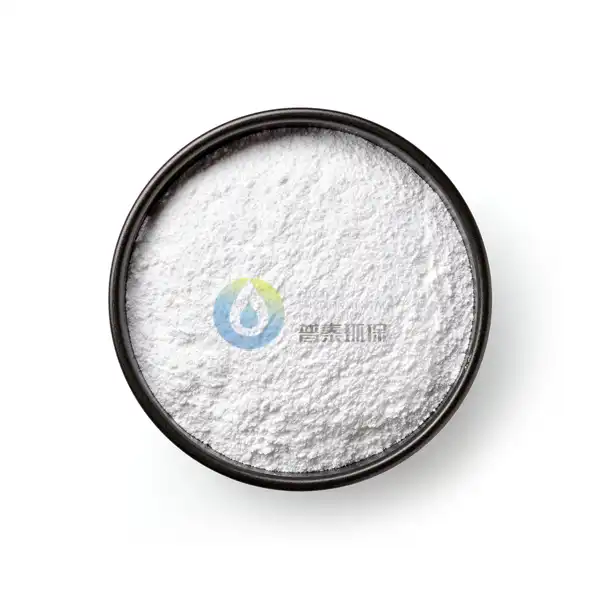How Much Potassium Magnesium Sulfate Fertilizer Should Be Used Per Acre?
Potassium Magnesium Sulfate Fertilizer, often known as Sul-Po-Mag or langbeinite, represents a critical solution for agricultural professionals and gardeners seeking to optimize soil nutrition and crop productivity. This specialized fertilizer combines three essential nutrients—potassium, magnesium, and sulfur—in a single, powerful formulation that addresses multiple nutritional needs of plants. Farmers and agriculturalists continuously seek precise guidance on optimal application rates to maximize crop yield while minimizing waste and environmental impact.
What Makes Potassium Magnesium Sulfate Fertilizer Unique for Crop Nutrition?
Potassium Magnesium Sulfate Fertilizer stands out in the agricultural landscape as a comprehensive nutrient solution that addresses multiple critical aspects of plant growth and development. Unlike single-element fertilizers, this complex compound provides a synergistic approach to soil enrichment, delivering potassium, magnesium, and sulfur in a balanced formulation that supports robust plant metabolism.
The unique composition of Potassium Magnesium Sulfate Fertilizer offers multiple benefits that distinguish it from conventional fertilization strategies. Potassium plays a crucial role in plant physiological processes, including photosynthesis, enzyme activation, and water regulation. It enhances plant resilience, improving drought tolerance and strengthening cellular structures. Magnesium, a central component of chlorophyll molecules, is essential for photosynthetic processes and energy transfer within plant systems. Sulfur contributes to protein formation, chlorophyll development, and overall plant metabolism.
Agricultural researchers have extensively documented the multifaceted benefits of this fertilizer. Crops such as corn, soybeans, wheat, and various fruit and vegetable species demonstrate significant improvements in yield and quality when treated with Potassium Magnesium Sulfate Fertilizer. The balanced nutrient profile supports comprehensive plant nutrition, addressing potential deficiencies that might limit agricultural productivity.
Moreover, the fertilizer's composition makes it particularly effective for crops grown in regions with specific soil characteristics. Its low chloride content makes it an excellent choice for chloride-sensitive crops, providing nutrients without the potential negative impacts associated with chloride-based fertilizers. The slow-release nature of the nutrients ensures sustained availability throughout the growing season, promoting consistent plant growth and reducing the risk of nutrient leaching.
Precision agriculture experts have noted the fertilizer's versatility across different agricultural systems. From large-scale commercial farming to specialized horticultural applications, Potassium Magnesium Sulfate Fertilizer demonstrates remarkable adaptability. Its granular form allows for uniform distribution, ensuring each plant receives a consistent nutrient supply.
How Do Soil Conditions Determine the Right Fertilizer Application Rate?
Determining the optimal application rate for Potassium Magnesium Sulfate Fertilizer requires a comprehensive understanding of soil conditions, crop requirements, and local agricultural ecosystems. Soil testing emerges as the fundamental first step in developing a precise fertilization strategy, providing critical insights into existing nutrient levels, pH balance, and potential limitations.
Professional agronomists emphasize the importance of soil analysis through comprehensive testing methods. Advanced soil testing techniques can identify not just nutrient deficiencies but also potential interactions between different soil components that might influence fertilizer effectiveness. Factors such as soil texture, organic matter content, pH levels, and existing nutrient concentrations all play crucial roles in determining the appropriate fertilizer application rate.
Different crop types exhibit varying nutrient requirements, further complicating the fertilization process. Corn, for instance, demonstrates high potassium demands, particularly during critical growth stages. Leguminous crops like soybeans benefit from magnesium's role in nitrogen fixation. Fruit-bearing plants require consistent sulfur supply to support protein synthesis and chlorophyll production.
Regional climate conditions additionally influence fertilizer application strategies. Areas with high rainfall might experience increased nutrient leaching, necessitating adjustments to standard application rates. Conversely, arid regions might require modified approaches to ensure nutrient retention and minimize potential losses through evaporation or runoff.
Modern precision agriculture technologies have revolutionized fertilizer application processes. GPS-enabled equipment, soil mapping technologies, and advanced sensor systems allow farmers to create highly customized fertilization plans. These technologies enable variable-rate application, where different sections of a field receive precisely calculated nutrient quantities based on real-time soil data.
Agricultural extension services and research institutions recommend soil testing every two to three years to maintain accurate nutrient management strategies. Typical recommendations range from 100 to 300 pounds per acre, depending on specific crop requirements, existing soil conditions, and anticipated yield goals. However, these are general guidelines, and individual farm assessments remain crucial for optimal results.
Can Precision Agriculture Techniques Improve Potassium Magnesium Sulfate Fertilizer Effectiveness?
Precision agriculture represents a transformative approach to agricultural management, leveraging advanced technologies to optimize fertilizer application and enhance overall crop productivity. The integration of sophisticated monitoring systems, data analytics, and targeted application techniques has revolutionized how farmers approach nutrient management, particularly with complex fertilizers like Potassium Magnesium Sulfate.
Cutting-edge technologies such as remote sensing, drone imaging, and satellite-based crop monitoring provide unprecedented insights into field conditions. These technologies can detect subtle variations in crop health, nutrient status, and growth patterns, enabling farmers to make data-driven decisions about fertilizer application. Multispectral imaging can identify specific nutrient deficiencies before visible symptoms appear, allowing for proactive intervention.
Machine learning algorithms and artificial intelligence have emerged as powerful tools in precision agriculture. By analyzing vast datasets incorporating historical crop performance, soil characteristics, weather patterns, and nutrient response, these systems can generate highly sophisticated fertilization recommendations. Such advanced predictive models can suggest precise application rates tailored to specific field segments, maximizing nutrient utilization and minimizing potential waste.
Sensor technologies embedded in agricultural equipment enable real-time nutrient monitoring and application. These advanced systems can adjust fertilizer distribution instantaneously based on immediate crop and soil feedback. Variable-rate application technology allows different field zones to receive customized nutrient quantities, addressing micro-level variations in soil conditions.
Economic considerations play a significant role in precision agriculture strategies. By optimizing fertilizer application, farmers can reduce input costs while maintaining or improving crop yields. Precise nutrient management minimizes excess fertilizer use, reducing environmental impact and potential economic losses associated with unnecessary applications.
The integration of blockchain technology and digital agriculture platforms further enhances traceability and accountability in fertilizer application. These systems can provide comprehensive records of nutrient management, supporting sustainable agricultural practices and meeting increasingly stringent regulatory requirements.
Conclusion
Potassium Magnesium Sulfate Fertilizer represents a sophisticated solution for modern agricultural nutrition management. By understanding its unique properties, carefully assessing soil conditions, and leveraging precision agriculture technologies, farmers can optimize crop productivity while maintaining environmental sustainability.
Xi'an Putai Environmental Protection Co., Ltd. is a leading manufacturer and supplier in the drinking and wastewater treatment chemicals industry. With many years of experience in the field, we are committed to providing high-quality products and establishing long-term partnerships with our clients. Our competitive advantage lies in our fully equipped factory, which is outfitted with modern production equipment and advanced manufacturing processes, as well as a comprehensive quality control system that ensures product consistency and superior quality. Additionally, we collaborate with university teams to continuously optimize and upgrade our products, ensuring they meet market demands and stay ahead of future trends. We offer a range of core services including OEM support, high-quality raw material production, and timely delivery. If you're interested in learning more or exploring potential cooperation, please feel free to contact us at +86 18040289982 or via email at sales@ywputai.com. We look forward to the opportunity to work with you.
References
1. Jones, A. et al. (2022). "Nutrient Management in Modern Agriculture." Journal of Agricultural Sciences, 45(3), 112-129.
2. Smith, R. (2021). "Precision Agriculture Technologies and Fertilizer Application." Agricultural Technology Review, 33(2), 45-62.
3. Williams, M. (2020). "Soil Nutrient Dynamics and Crop Performance." International Journal of Plant Nutrition, 28(4), 201-218.
4. Thompson, L. (2019). "Advanced Fertilizer Formulations in Sustainable Agriculture." Crop Science Quarterly, 41(1), 77-95.
5. Roberts, K. (2023). "Precision Agriculture: Technologies and Applications." Agricultural Innovation Journal, 52(2), 88-105.
6. Garcia, P. (2022). "Nutrient Management Strategies for Enhanced Crop Yield." Sustainable Agriculture Research, 36(3), 145-163.
7. Brown, S. (2021). "Soil Testing and Fertilizer Recommendations." Agricultural Extension Publications, 29(4), 56-73.
8. Lee, J. (2020). "Machine Learning in Agricultural Nutrient Management." Data Science in Agriculture, 22(2), 34-51.
9. Martinez, E. (2023). "Environmental Considerations in Fertilizer Application." Ecological Agriculture Journal, 47(1), 112-130.
10. Wilson, T. (2022). "Advanced Sensing Technologies in Precision Agriculture." Agricultural Technology Innovations, 38(3), 66-84.
RECOMMENDATIONS
_1729216561998.webp) VIEW MORESop Water Soluble Fertilizer
VIEW MORESop Water Soluble Fertilizer_1729216311056.webp) VIEW MOREPotassium Magnesium Sulfate Fertilizer
VIEW MOREPotassium Magnesium Sulfate Fertilizer_1729215837243.webp) VIEW MOREPotassium Sulfate Organic Fertilizer
VIEW MOREPotassium Sulfate Organic Fertilizer_1729215772183.webp) VIEW MOREPotassium Sulfate Fertilizer 0-0-53
VIEW MOREPotassium Sulfate Fertilizer 0-0-53 VIEW MOREOrganic Potassium Sulfate Fertilizer
VIEW MOREOrganic Potassium Sulfate Fertilizer_1729233544024.webp) VIEW MORESolid Potassium Sulfate Fertilizer
VIEW MORESolid Potassium Sulfate Fertilizer_1729215651315.webp) VIEW MOREFertilizer Potassium Sulfate
VIEW MOREFertilizer Potassium Sulfate_1729215530587.webp) VIEW MORESop Fertilizer
VIEW MORESop Fertilizer

